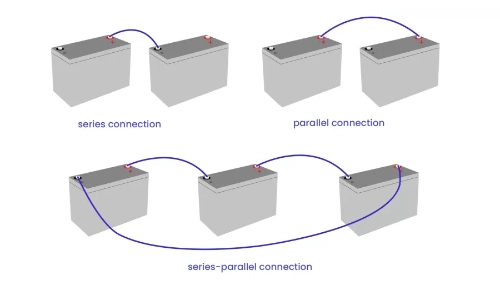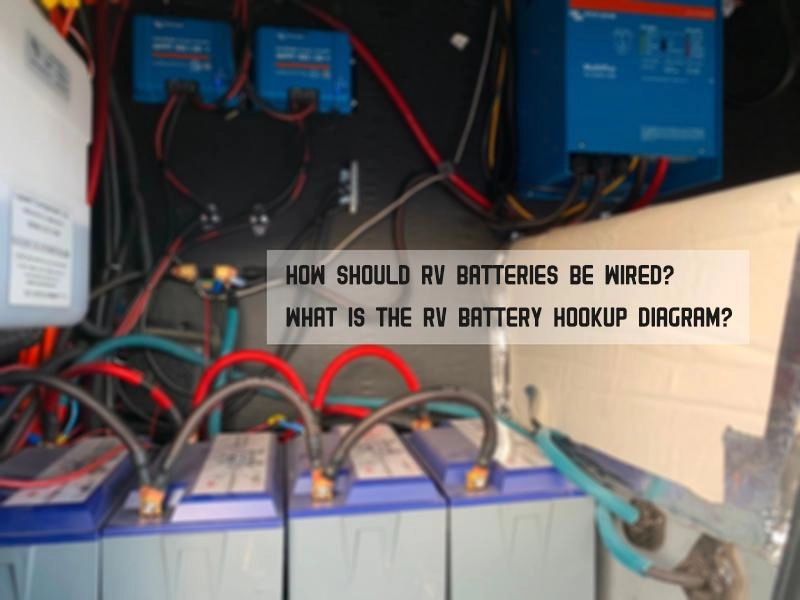Battery Connections: A Comprehensive Guide to Optimizing Performance and Safety
Battery connection is a crucial aspect of electrical systems, especially when dealing with lithium-ion batteries. Whether you’re setting up a power bank, an electric vehicle, or an off-grid solar system, understanding proper battery connections is essential for ensuring optimal performance, safety, and longevity. In this guide, we will delve into the intricacies of battery connections, their importance, various connection methods, factors to consider, and tips for connecting battery chargers. Let’s delve into the key aspects of battery connections.
Part 1: What are Battery Connections?

Battery connections refer to the process of linking batteries together in a circuit or system, enabling them to work in unison to provide power. These connections can be established using different configurations, such as series, parallel, or a combination of both. Proper battery connections ensure efficient power distribution, reduce the risk of overloading or damaging the batteries, and prolong their lifespan.
The Importance of Correct Battery Connections
- Optimal Performance: Correct battery connections ensure that the voltage and current levels match the requirements of the system, leading to smooth and efficient operation. Incorrect connections can result in poor performance or even system failure.
- Battery Lifespan: When batteries are connected correctly, the power load is distributed evenly across the cells, preventing any single battery from being overstressed. This balanced load extends the battery’s lifespan and the overall system’s longevity.
- Safety: Incorrectly connected batteries can pose safety hazards, such as short circuits, thermal runaway, or explosions. Properly connected batteries help minimize these risks, ensuring safe and reliable operation.
Part 2: How to Connect Lithium-Ion Batteries
1. Parallel Battery Connection
Method:
- Connect the positive terminal of one battery to the positive terminal of another, and the negative terminal to the negative terminal to establish a parallel connection.
- Ensure that all batteries have the same voltage before connecting them in parallel.
Characteristics:
- Increases the total capacity (mAh) while maintaining the same voltage.
- Parallel connections enhance capacity, extending device runtime.
- Ideal for applications that require high capacity and sustained power, such as electric vehicles and backup power systems.
Applications:
- Electric Vehicles: Parallel battery setups increase the total energy storage, which leads to extended driving ranges.
- Portable Electronics: Parallel connections extend device usage, providing longer battery life for smartphones, laptops, and other devices without altering the voltage.
2. Series Battery Connection
Method:
- Connect batteries in series by connecting the positive terminal of one battery to the negative terminal of the next.
- Continue the connection until the desired voltage is achieved.
Characteristics:
- Increases the total voltage while keeping the capacity (mAh) the same as a single battery.
- Series connections are ideal for applications requiring higher voltages, such as powering high-performance electronics like motors.
- Connecting batteries in series increases the overall voltage.
Applications:
- Power Tools: Lithium-ion batteries connected in series provide the higher voltage needed to efficiently drive motors.
- Solar Power Systems: Connecting batteries in series accumulates the voltage from multiple batteries, optimizing power storage and enabling higher system performance.
3. Series-Parallel Battery Connection
Method:
- Combine both series and parallel connections to achieve the desired voltage and capacity.
- Start by connecting batteries in parallel to increase capacity, resulting in parallel groups that can then be connected in series to increase voltage.
Characteristics:
- This hybrid configuration provides a balance between increased capacity and voltage.
- It offers flexibility in designing battery setups tailored to specific power requirements.
- Careful planning is essential to ensure that the capacity and voltage are properly balanced throughout the battery pack.
Applications:
- Hybrid Vehicles: Series-parallel connections enable higher capacity and voltage, making them suitable for hybrid vehicles that require sustained power over extended periods.
By understanding and implementing these methods, you can effectively optimize battery setups for various applications, ensuring the safety, performance, and longevity of lithium-ion batteries. For a deeper understanding of lithium battery performance, refer to our LiFePO4 battery guide. This guide will provide you with more comprehensive information.
Part 3: Correct Battery Connection Sequence
When connecting a battery, it is recommended to connect the positive terminal (red) first, followed by the negative terminal (black). This sequence helps minimize the risk of short circuits and sparks. Connecting the positive terminal first minimizes the risk of short circuits by reducing accidental contact with metal or conductive materials.
Similarly, when disconnecting a battery, it is recommended to disconnect the negative terminal first, followed by the positive terminal. This ensures a safe interruption of the circuit, preventing the risk of accidental short circuits.
Part 4: Battery Connection Considerations
Battery Compatibility
It is important to connect batteries with the same voltage and capacity ratings. Mismatched batteries can lead to imbalances, leading to reduced performance or potential damage to the batteries and electrical system.
Battery Condition
Before connecting any batteries, ensure they have a similar state of charge. Connecting a fully charged battery to a partially charged battery can create imbalances, reducing charging and discharging efficiency. Ideally, all batteries should be at the same state of charge.
Wiring and Connections
Pay close attention to the quality of wiring and connections. Ensure that the cables used for battery connections are of the correct gauge to manage the current without excessive resistance or voltage drop. Loose or corroded connections can lead to safety issues, such as reduced performance.
Protection and Monitoring
Consider incorporating protection devices such as fuses, circuit breakers, or a Battery Management System (BMS) to protect the batteries and electrical system. These systems help prevent overcharging, over-discharging, overheating or cell damage.
Ventilation
If connecting batteries in an enclosed space, ensure adequate ventilation to dissipate heat and prevent the buildup of potentially harmful gases. Proper ventilation is especially important for lithium-ion batteries, which are sensitive to temperature changes.
Safety Tips
Always follow the safety guidelines provided by the battery manufacturer. Wear appropriate personal protective equipment (PPE) when handling batteries, and avoid accidental contact with conductive materials or short circuits.
Part 5: Step-by-Step Guide to Connecting a Battery Charger
Follow these steps to properly connect a battery charger:
- Ensure that the charger is compatible with the type and voltage of the battery you are charging. Refer to the charger manual and battery specifications for compatibility details.
- Unplug the charger from the power source before making any connections.
- Identify the positive (+) and negative (-) terminals on both the battery and the charger. These terminals are typically labeled or marked with the corresponding symbols.
- Connect the charger’s positive clip or cable to the battery’s positive terminal, ensuring a secure connection.
- Connect the negative clip or cable to the battery’s negative terminal, also ensuring a secure connection.
- Double-check all connections, ensuring they are tight, secure, and that no wires are exposed.
- Plug the charger into a power outlet, following the manufacturer’s guidelines.
- Monitor the charging process and follow the recommended charging times and procedures for the specific battery type.
- After the battery is fully charged, disconnect the charger from the power outlet before disconnecting the cables from the battery.
Disconnecting Battery Clips or Cables
When disconnecting battery clips or cables, it’s essential to follow the correct sequence to ensure safety. Always remove the negative clip or cable first, before disconnecting the positive clip or cable. This helps avoid potential short circuits and reduces the risk of damage.
After safely disconnecting the clips or cables, be sure to store the battery charger in a safe location according to the manufacturer’s guidelines to avoid safety hazards.
Part 6: Conclusion
In conclusion, proper battery connections are crucial for ensuring optimal performance and safety. By understanding the different connection methods, considering key factors, and following the correct steps, you can enhance the efficiency and lifespan of your batteries. Whether you’re dealing with a portable power unit or a renewable energy system, connecting batteries correctly helps maximize their potential and allows you to confidently enjoy their benefits.









